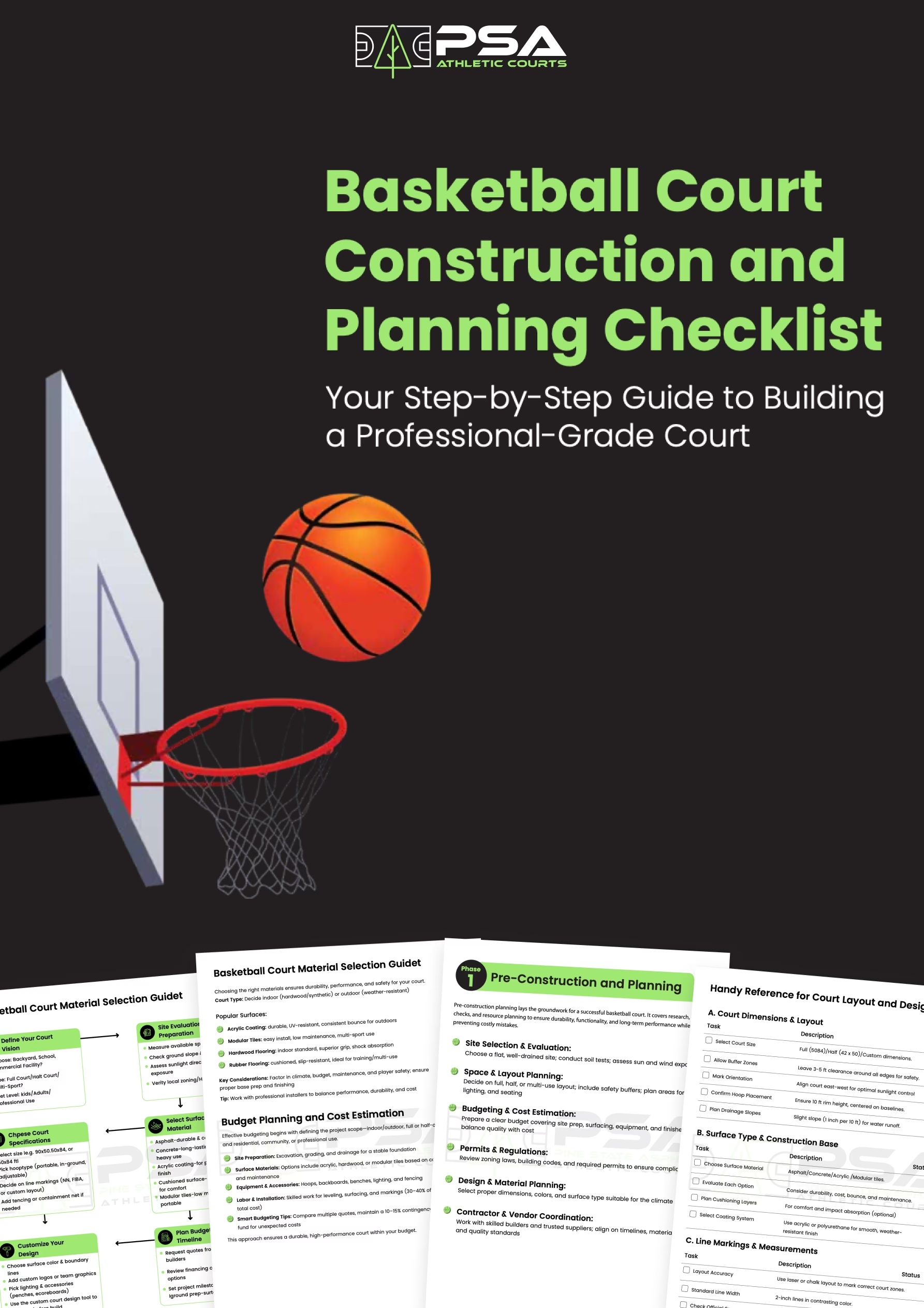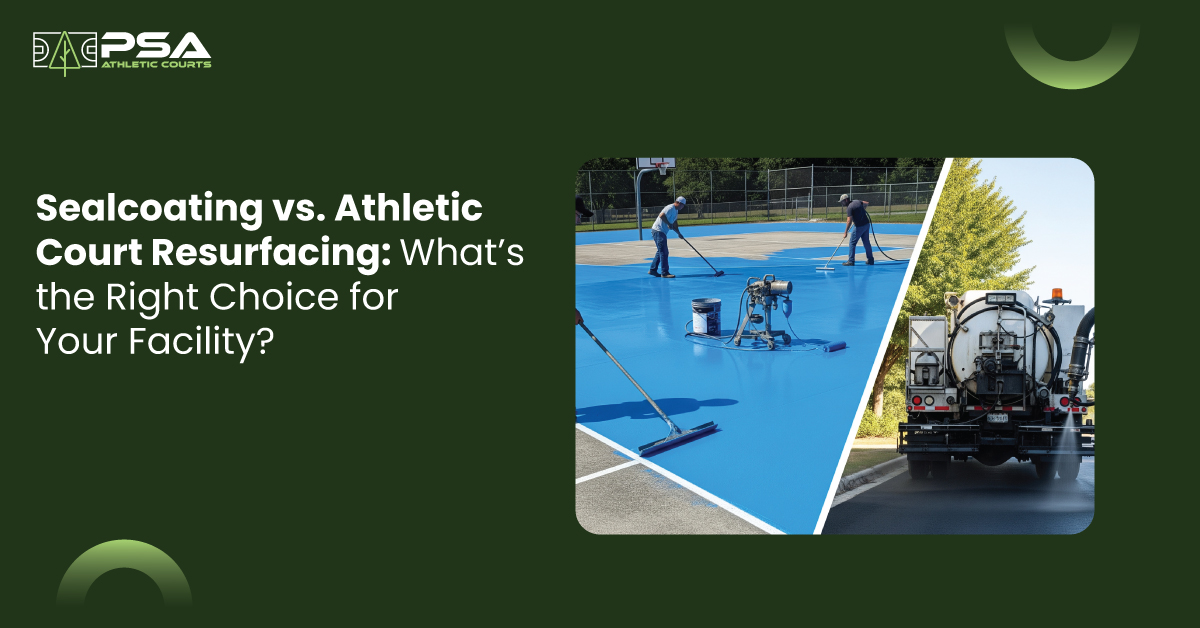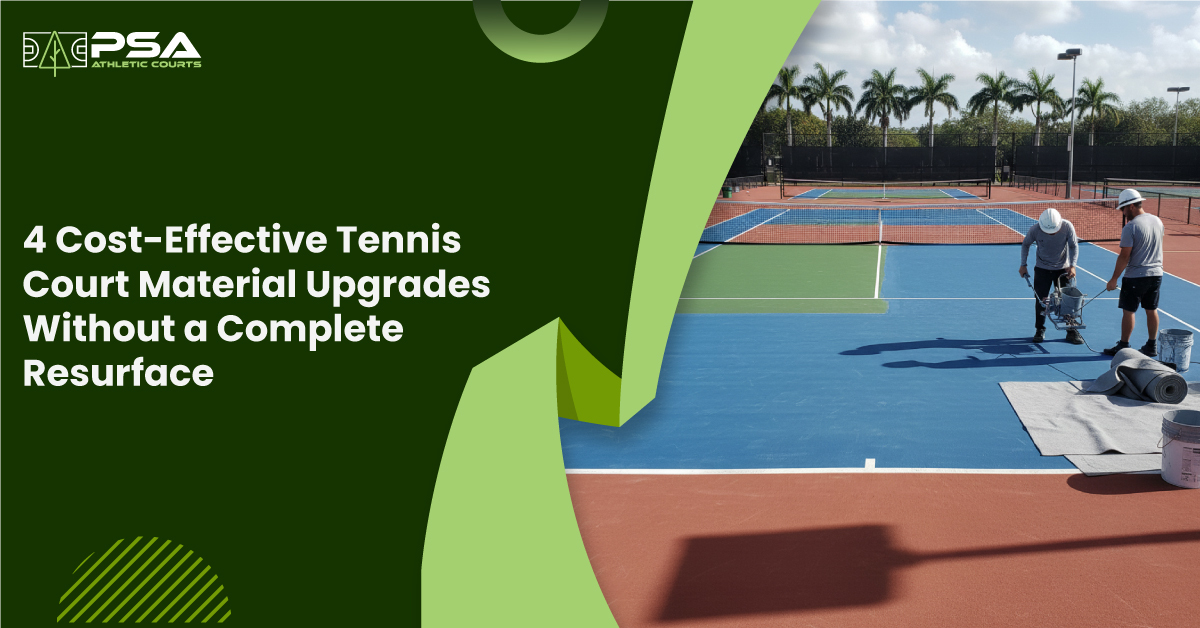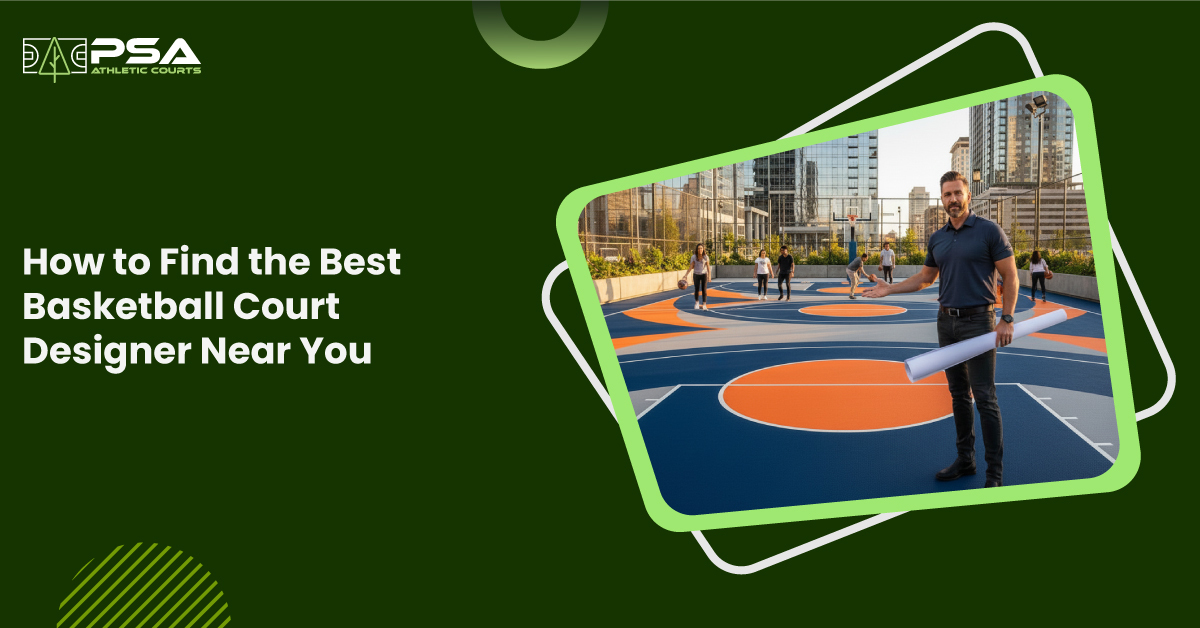Maintaining outdoor surfaces is important but when it comes to athletic courts, not all asphalt maintenance methods apply. One of the biggest mistakes facility managers make is confusing commercial sealcoating (used for roads and parking lots) with athletic court resurfacing, which follows a very different process.
In this guide, we’ll break down the key differences and help you understand the right option for your court or facility.
So, which is right for you? If you’re planning to upgrade your outdoor sports court, visit Pine State Courts for expert court design and construction solutions across Maine.
What Is Commercial Sealcoating?
Sealcoating is a maintenance treatment applied to asphalt driveways, roadways, and parking lots. It creates a thin protective barrier on top of asphalt to shield it from water, UV rays, oil, and chemical damage.
Best for:
- Parking lots and driveways
- Low-traffic roadways
- Budget-friendly appearance refresh
Important Note:
Sealcoating is not recommended for athletic courts. It creates a slick finish that’s unsafe for play, and it doesn’t bond properly with acrylic coatings used in court surfacing systems.
What Is Asphalt Resurfacing?
Athletic court resurfacing is a specialized multi-step process designed for tennis, basketball, and pickleball courts. It involves cleaning, patching, and applying textured acrylic coatings that meet safety and performance standards.
Typical Steps Include:
- Power washing with a court-specific pressure washer
- Crack repair (acrylic or membrane-based)
- Leveling low spots or birdbaths
- Acrylic resurfacer
- Two to three coats of sport-specific color coating
- Line striping to regulation specs
Best for:
- Tennis courts, basketball courts, and pickleball surfaces
- Facilities looking to improve surface traction, playability, and aesthetics
- Courts needing repair after wear or aging
Key Differences at a Glance
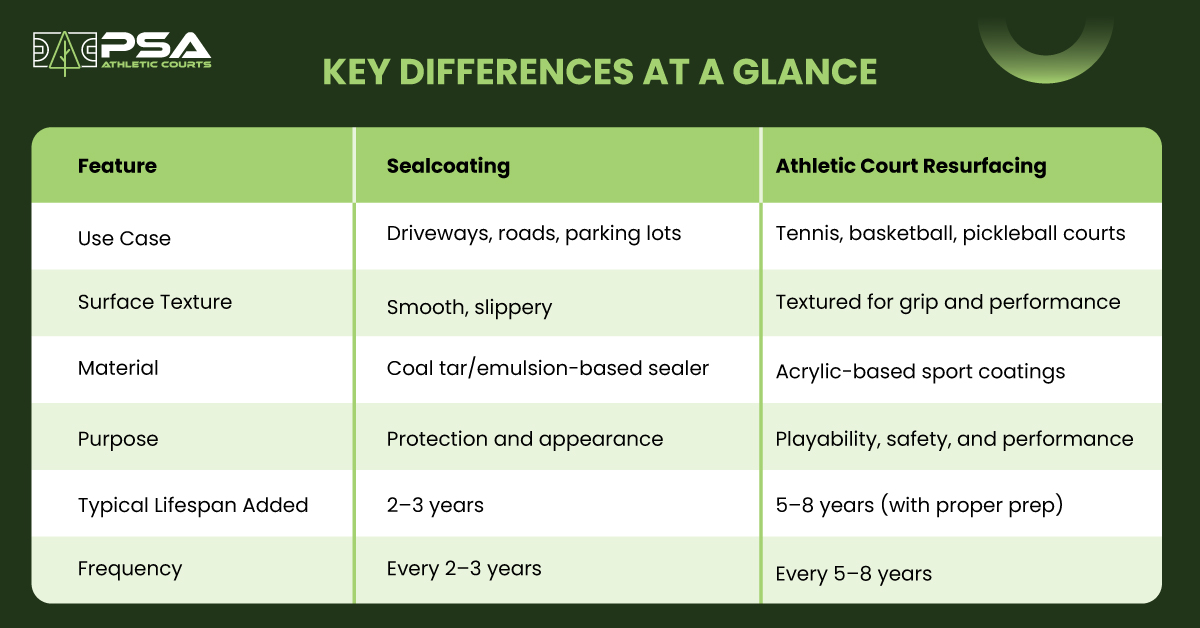
Why Sealcoating Shouldn’t Be Used on Athletic Courts?
Sealcoating is a great preventive maintenance option. If your sports surface shows light wear such as fading, minor hairline cracks, or loss of flexibility, sealcoating will give it a facelift and guard against worsening damage.
Using sealcoat on courts can do more harm than good:
It becomes slippery and unsafe for athletes
It peels under acrylic coatings
It traps moisture and causes surface failures
It voids most surfacing manufacturer warranties
If you’re trying to maintain a sports court, sealcoating is not just ineffective—it’s a liability.
When Is Asphalt Resurfacing the Right Call?
If the asphalt has visible cracks, water damage, or surface warping, sealcoating won’t be enough. Resurfacing provides a long-term solution by strengthening the base and replacing the top layer.
Choose resurfacing if:
- There are potholes, alligator cracks, or unevenness.
- The surface is over 10 years old.
- You want to extend the lifespan without a full repaving.
Which Option is Best for Sports Facilities?
Sealcoating Is Better When:
- Your surface is under 5–7 years old.
- Your main concerns are appearance and protection.
- You’re planning seasonal maintenance.
Asphalt Resurfacing Is Better When:
- The court or lot is 10–20 years old.
- Safety and performance are being affected.
- You want to avoid the cost of full repaving.
If you’re looking to build a brand-new court or resurface an existing one, design your custom court here: our team can help you choose the right surface and maintenance plan for long-lasting performance.
Cost Considerations
💰 How Much Does Asphalt Resurfacing Cost?
The average cost of asphalt resurfacing ranges from $1.50 to $3.00 per square foot, depending on the location, surface condition, and project scale. Sports facilities with larger surface areas should factor in preparation and downtime costs.
💰 Sealcoating Costs
Sealcoating is significantly cheaper at $0.15 to $0.25 per square foot and can be repeated frequently as part of a routine maintenance plan.
How Long Does Asphalt Resurfacing Last?
With proper care and drainage, resurfacing can last 8 to 15 years. It’s a smart investment for high-traffic sports facilities where surface performance and user safety are non-negotiable.
Need Help Deciding?
Both methods offer unique benefits sealcoating for ongoing protection, and resurfacing for long-term restoration. A professional assessment can help you make the best choice based on usage, budget, and surface condition.
Ready to Restore Your Asphalt Court or Facility?
Our experts at Pine State Asphalt specialize in both sealcoating and resurfacing services for sports courts, parking lots, and commercial properties. Contact us today for a free consultation and keep your facility looking and performing its best.
Choosing the Right Maintenance Strategy
If you manage a parking lot or access road, sealcoating can be a quick and inexpensive way to refresh it.
If you're maintaining or upgrading an athletic court, you need a court-specific resurfacing system for safety, durability, and long-term performance.
Not Sure What You Need?
At Pine State Asphalt, we specialize in both asphalt maintenance and athletic court construction and resurfacing. Whether you need a basic lot sealcoat or a full court overhaul, our team will give you the right solution for your surface.
📞 Call us today at (207) 292-1336 or 📩 schedule your site visit online for a custom quote.
FAQs
What is asphalt resurfacing?
Asphalt resurfacing is the process of adding a new layer of asphalt over an existing surface to restore its strength and appearance without a complete replacement.
How much does asphalt resurfacing cost?
The average cost ranges from $1.50 to $3.00 per square foot, depending on the scope and site conditions.
How long does asphalt resurfacing last?
Properly installed and maintained resurfaced asphalt can last 8 to 15 years, depending on traffic and weather exposure.
How is resurfacing different from repaving?
Resurfacing adds a new layer over the old asphalt, while repaving involves tearing out and replacing the entire structure from the base up.
Is sealcoating enough for older sports facilities?
Sealcoating is best for well-maintained or newer surfaces. Older, cracked, or damaged asphalt often needs resurfacing or even repaving.
DOWNLOAD OuR
FREE GUIDE
Ready to build your dream court?
Download our FREE Basketball Court Construction & Planning Checklist and get the step-by-step roadmap to building a professional-grade court—from budget planning to final touches.
No guesswork, just results.
